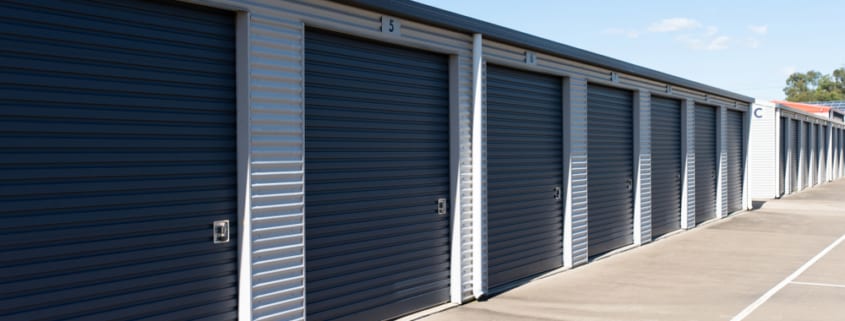Self-Storage: State of the Industry, Trends, and Outlook
While sometimes considered a “low-prestige” sector of the commercial real estate industry, the self-storage market is booming, driving $38 billion in annual industry revenue. In fact, 1 in 11 Americans pays for storage for their excess possessions. IbisWorld predicts that this industry will continue to grow at an average annual rate of 3% through 2020 and reach an estimated 60,000 units – more than 4x the number of Starbucks in America.
Let’s take a look at what factors are driving this immense growth and a brief outlook for the future of this sector.
State of the Industry
The storage of goods has almost become a burden for the average American. In fact, the United States is home to 90% of the global self-storage inventory, equating to roughly 54,000 facilities and amounting to 2.63 billion square feet of rentable storage. Currently, supply and demand for self-storage units is almost equal, resulting in an occupancy rate exceeding 90% and even nearing 100% in primary markets. Further, paying for self-storage units is similar to getting a gym membership; consumers join, forget about it, and continue paying every month. And more often than not, renters are willing to accept increases in the monthly rental rate, as it’s often not worth the hassle of packing up and moving items to another space. It’s also worth noting that these units don’t always require new construction; abandoned malls and warehouse spaces are ripe for repurposing (and, ironically, represent a full circle of consumerism).
Trends Driving Demand for Self-Storage
Despite recessions and demographics shifts, the self-storage sector has been beating all other major commercial property types with regards to earnings and stock performance (growth that has seldom been seen in other sectors). According to Curbed, “High-end self-storage sites can command two or three times the rent per square foot than commercial or residential uses”, contributing to the increasing popularity of this sector.
There are several trends at play here, which have amalgamated to create the current market conditions. These can largely be bucketed into three areas:
Disruption
The self-storage industry thrives on disruption, and top renters include downsizing retirees, the newly divorced, or those with a recent death in the family. These drivers are often summed up as “The Four D’s”: death, divorce, downsizing, and dislocation, a few of which are described below:
- Downsizing: Ten thousand Baby Boomers turn 65 every day, commonly thought to be “retiring age”. While they are leaving the workforce and shrinking their housing footprint, that doesn’t necessarily mean that they want to get rid of all their possessions when they move into a new place – particularly if those “possessions” include family heirlooms that they intend to pass down through their families. This is also not a passing trend; this generational cohort will continue to downsize over the next several decades.
- Dislocation: The average American moves residences 11 times in his or her lifetime. One of the most frequent reasons is for a new job. As Americans navigate the relocation process, they need somewhere to temporarily hold their possessions until they can find a more permanent location.
Attachment
The recovering economy means people are able to buy more material goods. And as consumer confidence and consumer spending rise (in fact, consumer confidence is near an 18-year high), so does the demand for storage. Bloomberg cites a “relentless accumulation of goods by American consumers”, with expenditures on durable goods increasing 20x from June 1967 to June 2017. This type of spending is expected to increase as more and more Millennials enter adulthood. This generational cohort is now the largest group of income-earners in the United States, and by 2020, they will have $1.4 trillion in buying power. As their purchasing power is increasing and they are acquiring more possessions, they are also running out of storage space. As such, they currently represent 1/3 of storage space renters. Further, Millennials are flocking to the city, but these increasingly crowded living areas often don’t offer many storage options and encourage the use of storage spaces.
Minimalism
Minimalism, a recent decluttering lifestyle trend, is on the rise, driven by a combination of consumer behavior and rising rents. The point of minimalism is to remove or eliminate items until only the necessary is left. However, regardless of how much we want to downsize, there will always be some possessions that people just aren’t ready to part ways with. For example, the LA Times reports that there are 300,000 items in the average American home, and we spend $1.2 trillion each year on nonessential goods. In a world of excessive consumption and unnecessary accumulation, minimalism continues to contribute to the rapid growth of self-storage areas.
While currently thriving, there may be a slowdown ahead for the self-storage industry. Many items that typically take up a lot of space and land in storage are now becoming obsolete, such as photo albums and over-sized consumer electronics. Further, a growing number of consumers are investing their money in experiences and services rather than goods. However, 50 years of increasing consumption and accumulation, a rising number of retirees, and solid economic performance means that this slowdown is not in the immediate future.
To learn about different CRE market niches, check out our post about the Hospitality Industry!











